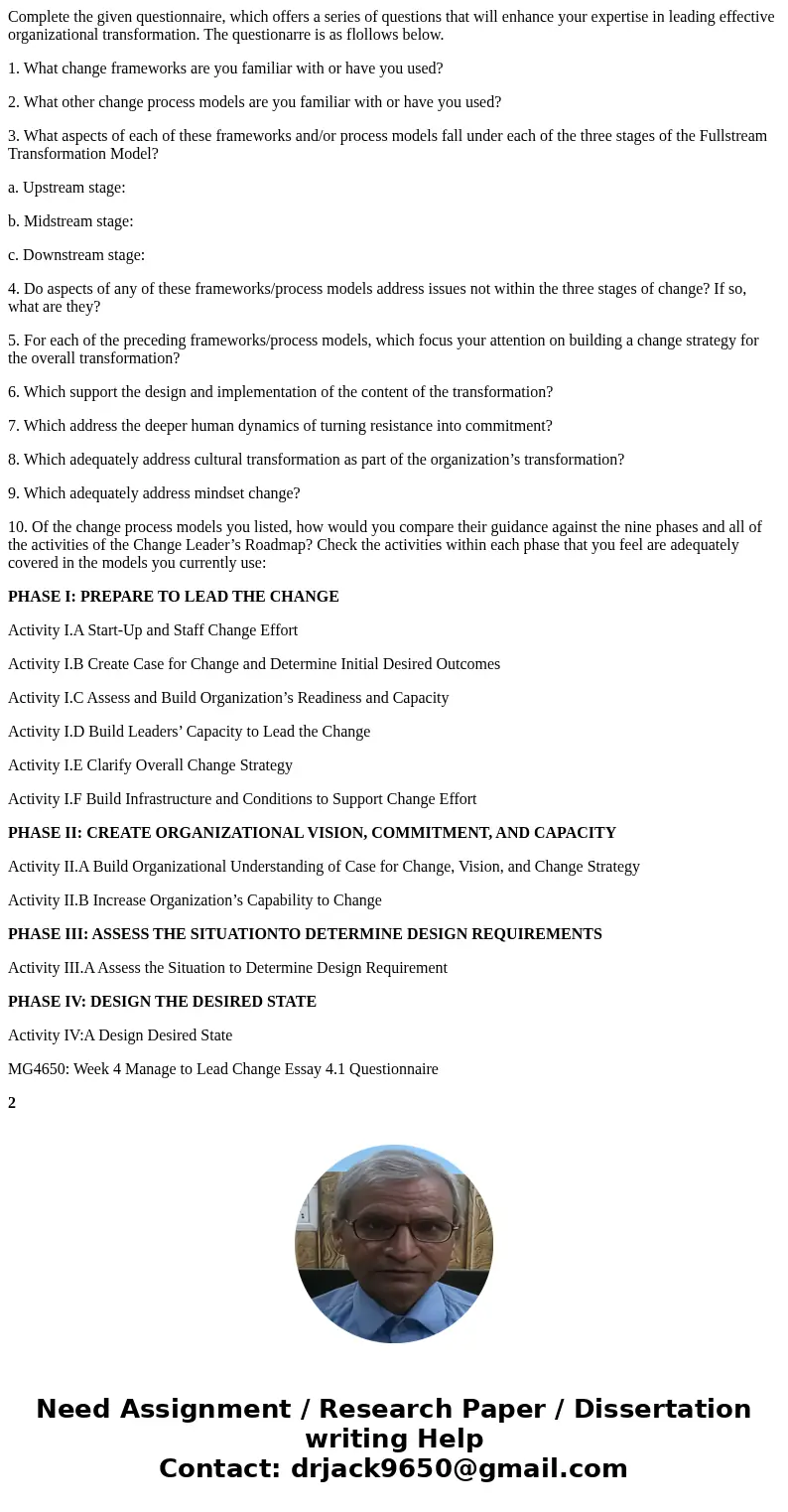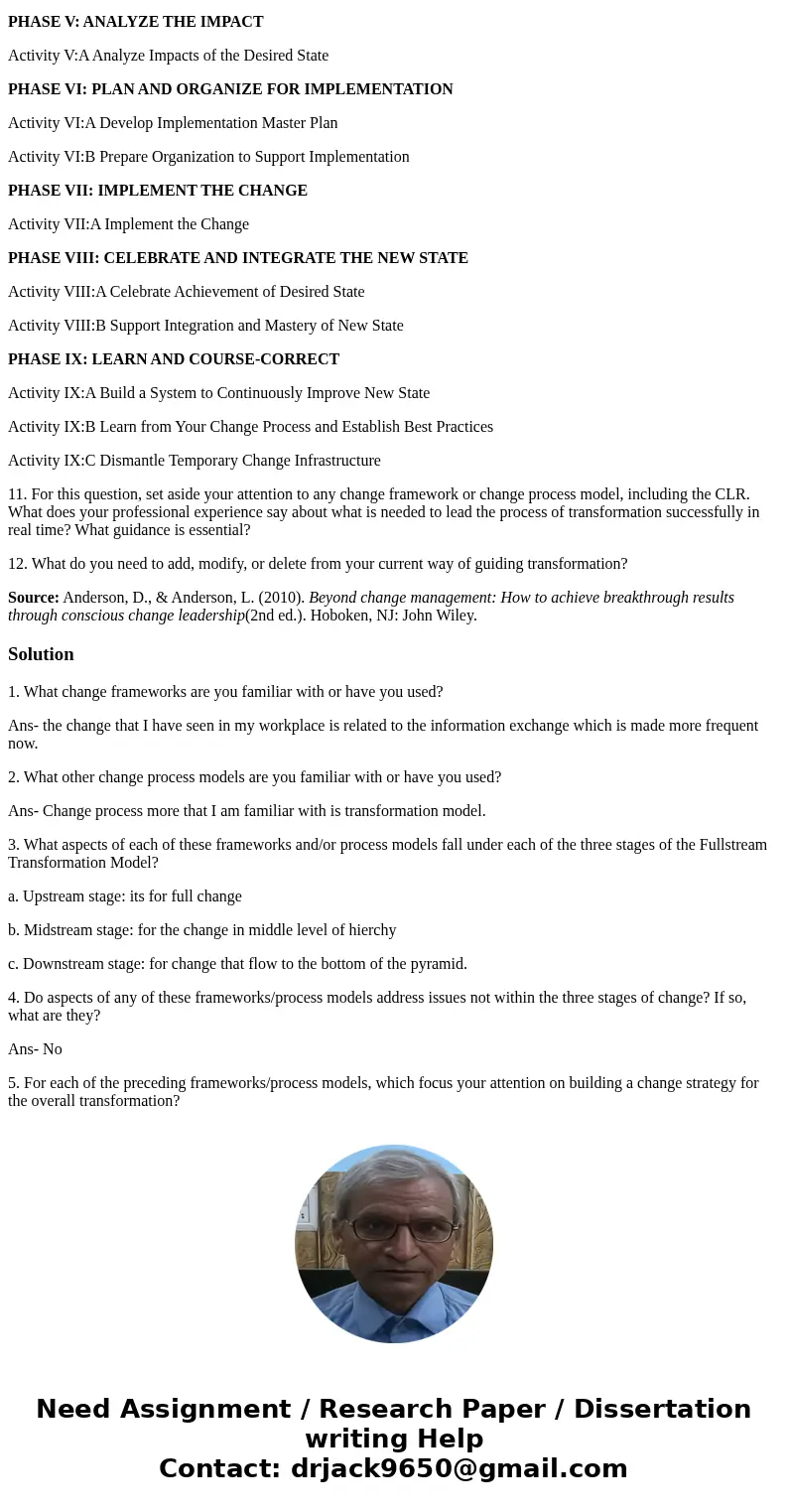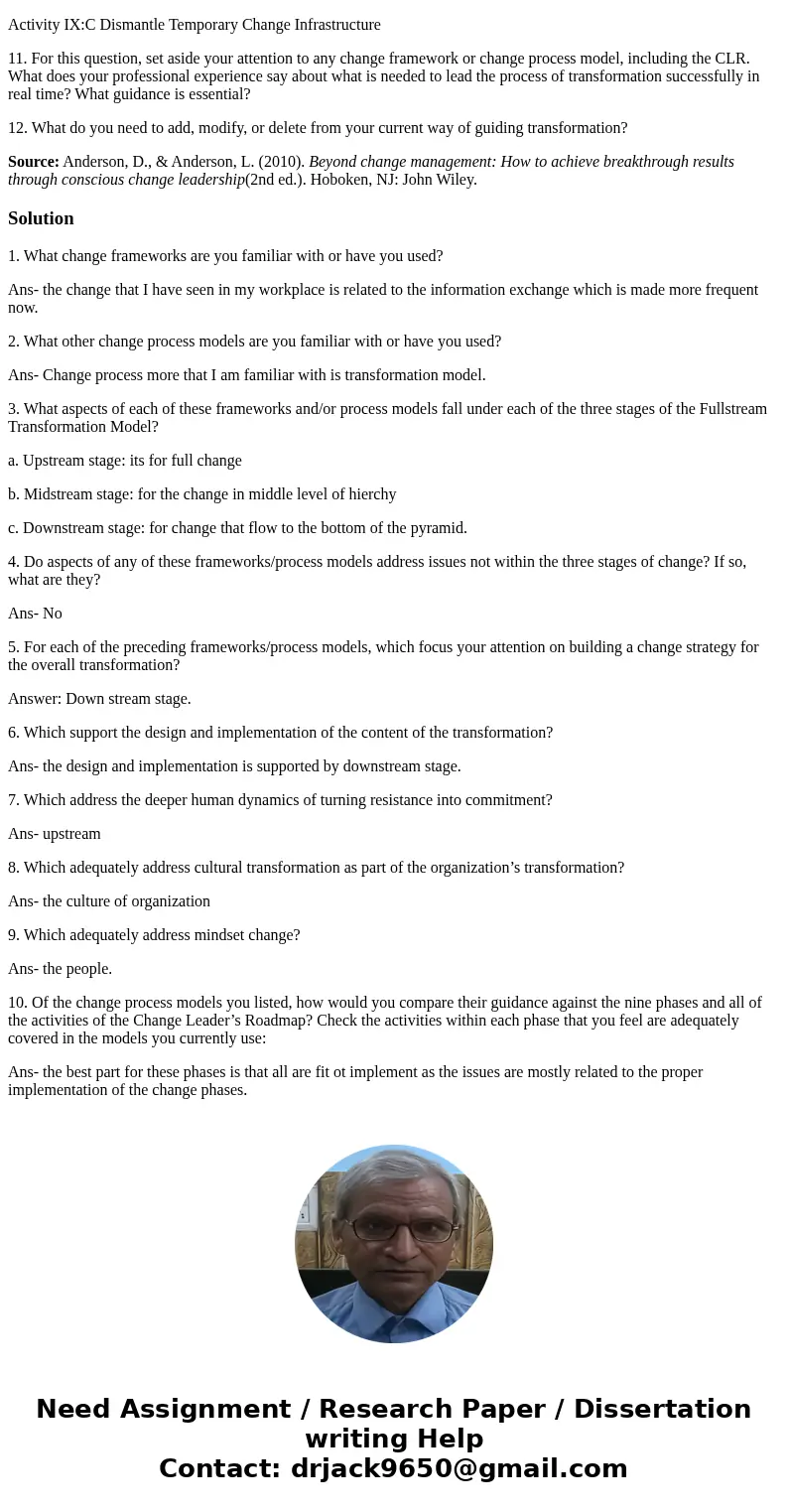Complete the given questionnaire which offers a series of qu
Complete the given questionnaire, which offers a series of questions that will enhance your expertise in leading effective organizational transformation. The questionarre is as flollows below.
1. What change frameworks are you familiar with or have you used?
2. What other change process models are you familiar with or have you used?
3. What aspects of each of these frameworks and/or process models fall under each of the three stages of the Fullstream Transformation Model?
a. Upstream stage:
b. Midstream stage:
c. Downstream stage:
4. Do aspects of any of these frameworks/process models address issues not within the three stages of change? If so, what are they?
5. For each of the preceding frameworks/process models, which focus your attention on building a change strategy for the overall transformation?
6. Which support the design and implementation of the content of the transformation?
7. Which address the deeper human dynamics of turning resistance into commitment?
8. Which adequately address cultural transformation as part of the organization’s transformation?
9. Which adequately address mindset change?
10. Of the change process models you listed, how would you compare their guidance against the nine phases and all of the activities of the Change Leader’s Roadmap? Check the activities within each phase that you feel are adequately covered in the models you currently use:
PHASE I: PREPARE TO LEAD THE CHANGE
Activity I.A Start-Up and Staff Change Effort
Activity I.B Create Case for Change and Determine Initial Desired Outcomes
Activity I.C Assess and Build Organization’s Readiness and Capacity
Activity I.D Build Leaders’ Capacity to Lead the Change
Activity I.E Clarify Overall Change Strategy
Activity I.F Build Infrastructure and Conditions to Support Change Effort
PHASE II: CREATE ORGANIZATIONAL VISION, COMMITMENT, AND CAPACITY
Activity II.A Build Organizational Understanding of Case for Change, Vision, and Change Strategy
Activity II.B Increase Organization’s Capability to Change
PHASE III: ASSESS THE SITUATIONTO DETERMINE DESIGN REQUIREMENTS
Activity III.A Assess the Situation to Determine Design Requirement
PHASE IV: DESIGN THE DESIRED STATE
Activity IV:A Design Desired State
MG4650: Week 4 Manage to Lead Change Essay 4.1 Questionnaire
2
PHASE V: ANALYZE THE IMPACT
Activity V:A Analyze Impacts of the Desired State
PHASE VI: PLAN AND ORGANIZE FOR IMPLEMENTATION
Activity VI:A Develop Implementation Master Plan
Activity VI:B Prepare Organization to Support Implementation
PHASE VII: IMPLEMENT THE CHANGE
Activity VII:A Implement the Change
PHASE VIII: CELEBRATE AND INTEGRATE THE NEW STATE
Activity VIII:A Celebrate Achievement of Desired State
Activity VIII:B Support Integration and Mastery of New State
PHASE IX: LEARN AND COURSE-CORRECT
Activity IX:A Build a System to Continuously Improve New State
Activity IX:B Learn from Your Change Process and Establish Best Practices
Activity IX:C Dismantle Temporary Change Infrastructure
11. For this question, set aside your attention to any change framework or change process model, including the CLR. What does your professional experience say about what is needed to lead the process of transformation successfully in real time? What guidance is essential?
12. What do you need to add, modify, or delete from your current way of guiding transformation?
Source: Anderson, D., & Anderson, L. (2010). Beyond change management: How to achieve breakthrough results through conscious change leadership(2nd ed.). Hoboken, NJ: John Wiley.
Solution
1. What change frameworks are you familiar with or have you used?
Ans- the change that I have seen in my workplace is related to the information exchange which is made more frequent now.
2. What other change process models are you familiar with or have you used?
Ans- Change process more that I am familiar with is transformation model.
3. What aspects of each of these frameworks and/or process models fall under each of the three stages of the Fullstream Transformation Model?
a. Upstream stage: its for full change
b. Midstream stage: for the change in middle level of hierchy
c. Downstream stage: for change that flow to the bottom of the pyramid.
4. Do aspects of any of these frameworks/process models address issues not within the three stages of change? If so, what are they?
Ans- No
5. For each of the preceding frameworks/process models, which focus your attention on building a change strategy for the overall transformation?
Answer: Down stream stage.
6. Which support the design and implementation of the content of the transformation?
Ans- the design and implementation is supported by downstream stage.
7. Which address the deeper human dynamics of turning resistance into commitment?
Ans- upstream
8. Which adequately address cultural transformation as part of the organization’s transformation?
Ans- the culture of organization
9. Which adequately address mindset change?
Ans- the people.
10. Of the change process models you listed, how would you compare their guidance against the nine phases and all of the activities of the Change Leader’s Roadmap? Check the activities within each phase that you feel are adequately covered in the models you currently use:
Ans- the best part for these phases is that all are fit ot implement as the issues are mostly related to the proper implementation of the change phases.



 Homework Sourse
Homework Sourse